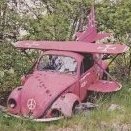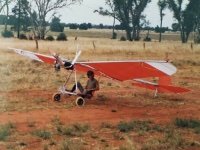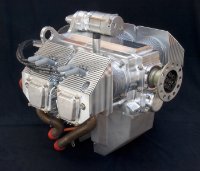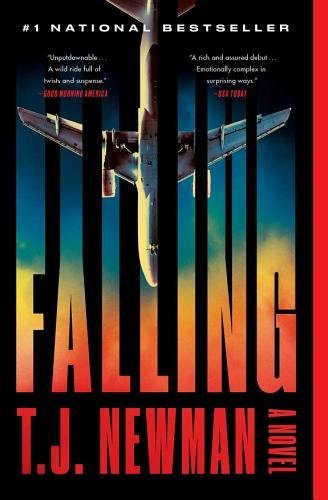All Activity
- Past hour
-
PureCaboose started following Winter Warming Strategies
-
I tend to wear Ridgeline gear, designed for outdoor people to sit in all weather and enjoy the outdoors. They work on the layer principle. During winter, I wear a thermal layer, then a fleece, then a thicker fleece with a windstopper and so on. On my feet, I wear Oakley boots (I fell in love with them at work), thin socks, then a thick thermal sock inside my boots. Don't get cold feet flying the plane or standing in place when flying the drones. You need to remember to move your feet and legs as well. If you just sit there and don't move them to keep the blood flowing, you will get cold, and it will be hard to warm up within the confines of a small plane cockpit. I am a fidgety person anyway, so I am always flexing my feet, etc. Another big one for retaining heat is your neck (especially the back) and your head. I have either a scarf and/or neck gaiter for winter and a thin thermal hat that fits under my helmet (and I block the air vents with tape in the helmet). As you get cold, your body will reduce the blood flow to your extremities to retain core heat, so staying warm and not letting your core cool is critical. Vests, layers, etc. As a kid, my mother felt the cold, and she had a small metho-powered pocket heater that was the size of a hip flask. You started the thing up, closed up the box and put it in a velvet bag and put it in your pocket to help keep core warmth. Not sure if you can still get them. Greg
-
No. But many engines (like my own childhood engine) hardly got any run time on them before being jammed in the back of a drawer. So quite a few near new ones pop up. They are popular for stunt because there's a certain speed you need to fly, any improvements on power are wasted in this case. There's a few Ruskie and Ukrainian engines around too.
-
Did a little research(better than faulty memory) - Think I probably had a Barbour jacket & over trousers. Good in UK summer, okay in light, short duration rain - bloody awful in heavy rain, winter cold, sleet, etc😈
-
facthunter started following Adels Grove?
-
I'm too risk averse to comment on that. I don't even know where it IS. Nev
-
That's one I haven't heard B4. Was she referring to heat exchangers? Nev
- 31 replies
-
Oh well, cant get satisfaction every time, "said the actress to the bishop"😈
- 31 replies
-
A lot of Imported cars did not have big enough radiator capacity for competition or really hot days (Australian Conditions)and if the area couldn't be increased they had to be thicker and I used fork Lift ones. The LADA Niva had a sturdy radiator. You need that on outback roads so they don't crack on the sidestraps. Also rubber Mounted adequately. None of this is rocket science. Where there was A V8 VERSION or one for the Automatic trans just use that. Oil coolers can go under the base of the spin on oil filter. No pipes at all. Nev
- 31 replies
- Today
-
They wear out in the bore fairly quickly, But run well. Are they still made? nev
-
A number of guys are running Fox 35s at the club 🙂
-
Id say you should email them, but they've gone broke in the meantime 😄
- 31 replies
-
Freizeitpilot started following Adels Grove?
-
Anyone got a recent update on Adels Grove as a flying stopover destination ? Their website is rather vague on accomodation and meals and seems focussed on camping only. I’m aware they got smashed by floods a few years ago and it is now operated by an Indigenous entity that may have different priorities to the previous owners.
-
So was the tide really coming in?
-
Be honest for once, don't blame the phone for your naughty antics.
-
Agh! Nev, The old Fox 35 Rocket. Had a few of them and bent a few with combat antics. Those were the days of many onfield cremations as a result, but we did have a lot of fun. One of my favorite models of which I built many, was George Aldriches Peacemaker. Kind regards Planey
-
Very clever - the kit comes with a a 25 MM ID hose adapter - not so many joins after all. "........don't understand about having different radiators for aircraft with different performances....." Its not a question of me not understanding that coolant radiators must be specified for diffrent engine sizes/applications, etc, its wondering why your kit supplier sees fit to not use the Rotax OM Radiator, that has been developed for the engine and what seems to be satisfactory in a host of aircraft from low/slow to high speed, pushers and tractors. Nothing sinister or argumentative , just curious 😈
- 31 replies
-
FrankPilot started following American George Preddy Jnr - Top WW2 P-51 Mustang Ace (MSFS)
-
From the build manual. Doesn't look like that big a deal to me. And I still don't understand what YOU don't understand about having different radiators for aircraft with different performances. Its as if you couldn't see that maybe a radiator from a F1 car might not perform exactly the same in a LandCruiser 😇
- 31 replies
-
It will be very clever, if you have managed to go from Rotax to Setrab, without some form of reducer. My guess, a minimum of two extra joins, over that for a hose Rotax to Rotax.😈
- 31 replies
-
kgwilson started following First electric powered UK light plane
-
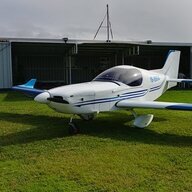
First electric powered UK light plane
kgwilson replied to red750's topic in UK/Europe General Discussion
CATL announced the 500Wh/kg a year ago and have been testing the technology since. With the market announcement in April I'd think that those who already have electric aircraft operating or in the pipeline will gain significant performance and range. What it can do straight away is improve the range of the existing Pipistrel quite dramatically as its existing batteries provide about 150kWh/kg. Charging time is falling massively too. Both BYD & CATL have developed Megawatt chargers that can provide 1000km of range in 5 minutes for an EV with a 100kWh battery. These are of course not main stream yet but the technology is here so it will not be far away. There is a lot of investment going in to battery powered short haul and vtol aircraft & autonomous operation. There was a demo one at last years Oshkosh. -
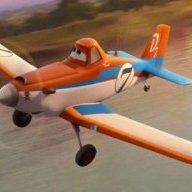
First electric powered UK light plane
facthunter replied to red750's topic in UK/Europe General Discussion
Never having to warm the engine up would save time. Engine reliability should be better. How about for Powered Gliders? Nev -
Those Belstaff Waxed canvas Jackets left Black stuff all over the cream and Blue seats at the Paragon Cafe. . Full Leathers is your own Body Bag. Very tidy. There were many times when My only vehicle was a Motor Bike. Nev
-
The port size is 22mm, not as small as you are probably imagining
- 31 replies
-
- 1
-

-
I believe you mean "Belstaff" waxed cotton riding gear. I never found them real warm. These days they are a fashion brand and sell more to non riders. The best to keep feet and hands warm is a flat twin BMW, free engine heating for feet and heated grips.
-
All good BurnieM. A very long time ago, I spent 5 years in the UK. My transport, for much of this time, was a Triumph 650. I had leather boots & gloves, the latest (at the time ) in all weather motorcycle gear - Berber/Burberry/Barba(?) heavy waxed over jacket & trouser. Open face helmet, traditional googles and leather face mask. Despite all sorts of strategies - newspaper under jacket (s), 2 pairs of trousers, wool & cotton socks, oversized rubber kitchen gloves over leather bike gloves, plastic bags over feet - I FROZE!!. The UK was/is a cold wet place - There were times I had difficulty opening my hands, after an extended winter ride. No amount of Dubbin seemed to keep by feet & hands dry, even the rubber over gloves/bags only had limited benefit. There is no doubt that I am a "lizard", much prefer heat to cold, so forgive my rejection of your, well considered, cold weather strategy - no offence intended😈
-
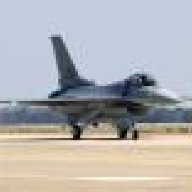
First electric powered UK light plane
turboplanner replied to red750's topic in UK/Europe General Discussion
The one I was thinking about was Barrie's in SA. This link shows the realistic 1 hour charge, 35 - 45 minute flight, difficulty finding places to land, airports too far apart (he was probably thinking about cross country hire at the time).
-
Tell a friend
-

Latest Site Update
The Recreational Flying Classifieds are back and they are FREE for you to list anything that you have for sale. Do you have an aircraft you wish to sell or some aircraft parts, pilot equipment or anything in aviation that you no longer need, well convert it to cash through the Classifieds System here on Recreational Flying, IT'S FREE TO LIST YOUR ITEM, or you can select the Featured option for only $10 which goes towards the cost of running the site. -
Site Donations
Help towards the site running costs and keep this great resource here for all recreational aviators
Site Donations
and be a First Class Member! -
Join or Create a Group
-
U.S.A. FAA FAR Part 103 and Basic Flying Machines
Public Group
-
Jabiru Engines
Open Group · 49 members
-
Recreational Flying Site group
Public Group
-
-
Upcoming Events
No upcoming events found -
Latest Gallery Image
-
Latest Books



